Ford Edge Vs Explorer: Which SUV is Right for You?

Mid-sized crossovers and SUVs are bread-and-butter vehicles for most auto companies.
Sure, there might be a sporty halo car that gets lots of ink, and there may even be a historical nameplate or two tugging at the heartstrings of nostalgic drivers. Those aren’t the machines that make bank. Well-built, high-riding, all-wheel-drive rigs packed with technology are generally the ones responsible for keeping the lights on.
Ford has a corporate cupboard full of the things. In fact, a solid argument can be made that engineer and marketers at the Blue Oval played an important role in mainstream America binning their station wagons and minivans in favor of an SUV in which to haul the family.
Get a Quote on a New Ford Explorer or EdgeAround for well over a decade now, and based on a front-wheel-drive platform, the Ford Edge is a popular model in the murderously competitive two-row crossover market. A variety of drivetrains are available, including a hawt ST with 335 horsepower and all-wheel drive.
The Explorer, meanwhile, returned to rear-wheel-drive architecture for the 2020 model year. Offering three-rows of seating, it boasts more room and technology than its predecessors.
Which SUV is right for you? Read on.
Ford Edge vs Explorer
Cabin Space
Edge: Only offered as a two-row vehicle, this is a great choice if the number of ankle-biters in one’s home amounts to no more than a pair. Freed from the requirement of accommodating humans in a third-row, the 2019 Edge has more second-row legroom than the physically longer 2020 Explorer at 40.6 inches vs 39.0 inches, respectively.
Explorer: Those seeking to haul more than five people—or at least desiring a Starfleet-sized Neutral Zone between siblings—will appreciate the Explorer’s three-row configuration. Its front two rows boast more shoulder room than the Edge, thanks to this machine being three inches wider than its two-row cousin. There’s slightly more headroom too.
Bottom Line: Explorer is the big family hauler of the pair, offering more seats and more overall passenger volume than the Edge as measured by cubic feet.
Cargo Capacity
Edge: This crossover with five seats will accept a grand total of 39.2 cubic feet of gear behind its second row. Without the need for storage of extra chairs, the Edge has some permanent and clever storage solutions in its cargo area. With the second row folded flat, it opens up a huge 73.4 cu-ft.
Explorer: With all seven seats deployed, the Explorer has 18.2 cubic feet of space in which to put your Costco shopping behind the third row. Folding those seats away consumes that in-floor volume but opens up a vast cavern measuring 47.9 cubic feet, an area of space that stretches over four feet from the second-row seatbacks to the closed liftgate. With all rows folded flat, there’s about 80 cu-ft of cargo capacity.
Bottom Line: If you’re constantly carrying a packed house, the Edge easily bests its showroom-mate in cargo capacity when all seats are full. It also has a lower lift-in height, meaning you won’t have to heave that 40-lb bag of flour as high when trying to transfer it from those massive shopping carts they have at Costco.
ALSO SEE: CVT Transmission Pros and ConsTechnology
Edge: FordPass internet connectivity is standard on all trims, allowing youngsters to jump online and Snap to their heart’s content. Wireless charging pads and an abundance of power outlets keep devices charged up. Lane-keeping tech helps drivers stay on the straight and narrow. Ford even directs a washer nozzle towards the rear-facing camera. In its latest refresh, the Edge also added a much larger, portrait-style touchscreen a la big brother.
Explorer: Standing proudly on the dashboard of high-buck models is an enormous 10.1-inch infotainment touchscreen, a unit which rivals Tesla for size if not seamless integration. Traffic-sensing tech like Ford’s Co-Pilot360 driver-assist tools help reduce stress by helping out with braking duties if it senses you’re about to back over Junior’s bike. Active Park Assist handles all steering, shifting, brake, and accelerator controls during a parking maneuver with a touch of a button.
Bottom Line: Both machines offer much in the way of gee-whiz technology, packing in features and goodies that were only found in high-end luxury cars just a few short years ago.
Powertrains
Edge: A pair of engine choices are offered in the Edge. Customers can select the standard-equipment 2.0-liter turbocharged inline-four making 250 horsepower or, in hot-rod ST trim, a tasty 2.7-liter turbo with six cylinders and 335 ponies in its stable. The latter is available only with all-wheel drive and an eight-speed automatic backs both engines.
ALSO SEE: 2019 Ford Edge ST ReviewExplorer: Based on a completely different platform than the Edge, the Explorer is available with either a 300-horsepower 2.3-liter turbocharged four-cylinder or a 365-hp 3.0-liter turbocharged V6. The latter is solely available on the high-zoot Platinum trim. Both engines are mated to a 10-speed automatic transmission and while the four-banger is offered in rear or four-wheel drive, the V6 is strictly a 4×4 rig.
ALSO SEE: Ford Ranger vs F-150: Which Truck is Right for You?Folks looking for either more performance or more parsimony should look to the ST model or the hybrid. The ST uses the turbo V6, but turned up to 400 hp and 415 lb-ft of torque. The hybrid features a naturally aspirated 3.3-liter V6 and a bigger battery pack. The combo nets drivers 318 hp, 322 lb-ft of torque, and a 500-mile range in rear-drive form.
Bottom Line: The Explorer is more powerful but heavier, with even the lightest example out-larding an AWD Edge by over 200 pounds. In fact, the powerful Edge ST makes exactly the same amount of torque, 380 lb-ft of it, as the V6 Explorer.
Fuel Economy
Edge: Given the barn-sized hole it has to punch through the atmosphere, Ford’s two-row Edge acquits itself well at the pumps. Front-wheel-drive models are rated at an impressive 29 mpg in highway driving, with a 1 mpg penalty for all-wheel drive on four-cylinder models. The powerful V6 is good for an estimated 21 mpg in mixed city and highway duty.
Explorer: The most fuel-efficient gas-only Explorer is the 2.3-liter rear-drive model, which posts 21 mpg city, 28 mpg highway, and a 24 mpg average. Sending power to all four contact patches shaves the scores down by 1 mpg across the board. Opt for the thirstier V6 and you’re looking at a 21 mpg average, or an even 20 mpg with AWD.
Switch over to the Explorer Hybrid and you’ll see big savings in the city, with it hitting 27 mpg city in rear-drive form. The RWD model averages 27 mpg combined; AWD is 25 mpg.
Bottom Line: Speaking pure ICE, no matter which way you slice it, the Edge is better on fuel than the Explorer thanks to size and weight. Physics wins again. The Explorer Hybrid does post the better overall figures, though.
Capability
Edge: Perhaps surprisingly, the Edge has a hair’s more ground clearance than the Explorer. At roughly 8 inches, neither rig is prepared to hit harsh off-road trails but it is unlikely owners will subject them to that environment. Like most other front-wheel-drive-based crossovers, the Edge can tow 3,500 lb.
Explorer: Freshly rated at a 5,600 lb towing capacity (5,000 for Hybrid), the new Explorer outstrips most of its rivals in terms of hauling duties. Even though that gravel patch at the mall is the only off-roading most Explorers are likely to sample, its approach angle of over 20 degrees provides extra security from damage caused by winter snowbanks or treacherous cement parking stops. A terrain-management system metes out power and traction based on road conditions.
Bottom Line: In terms of raw capability, the Explorer’s larger engine options and rear-wheel drive architecture make it more suitable for heavy work like towing a boat or travel trailer.
Style
Edge: Sleek and slick surfaces define the Edge, despite its name. A pair of frowning headlights scowl at traffic, serving as bookends for an enormous maw of a grille. Around back, a quasi-spoiler juts out from the roofline while twin exhaust tips poke from the rear bumper.
Explorer: Newly hewn for the 2020 model year, the Explorer casts a familiar shadow. Its corporate face is rugged enough to project a let’s-chop-some-wood persona but the taillights generally appear to be misshapen carry-overs from the old truck. Its forward-canted spear of metal just aft of the rear side doors is a wonderful bit of theatre ripped straight from the Land Rover Discovery.
Bottom Line: Always a subjective measure, your author’s jaundiced eye feels the Edge is a more pleasant shape, with softer lines and a more cohesive rear fascia. Outdoorsy-types may be drawn to the Explorer, especially after a few “lifestyle accessories” are ladled onto the exterior.
ALSO SEE: Honda Accord vs Honda Civic: Which Sedan is Right For You?Pricing
Edge: This two-row crossover technically starts a little over $32,000 including fees and destination charges. From there, volume models like the popular SEL trim sticker in the mid-30s and adding all-wheel drive tacks on about $1,500. Options on the Titanium trim can add up quickly and a fully loaded hot-rod ST can zoom past $50,000.
Explorer: Historically, the bigger Explorer is priced at a premium compared to the Edge, with base models starting about $3,000 higher. In fact, Explorer customers willing to give up leather seats and a sunroof will find themselves signing on the dotted line for less than most others will pay for the smaller Edge.
Bottom Line: Families looking for three rows of seating might be surprised to learn the Explorer is decidedly not many orders of magnitude more expensive than the two-row Edge. Expect this trend to continue.
The Verdict: Ford Edge vs Explorer
Look around your house. If your total family unit numbers no more than four, buy the Edge. It has plenty of space inside for a quartet and its amenities are legion. It is also cheaper to buy and cheaper to operate. But if space is at a premium, or you’re constantly ferrying six passengers, go for the Explorer.

Living in rural Canada, Matthew has immersed himself in car culture for over 30 years and relishes the thought of a good road trip. A certified gearhead, he enjoys sharing his excitement about cars and is very pleased to contribute at AutoGuide. Matthew is a member of Automotive Journalists Association of Canada (AJAC).
More by Matthew Guy



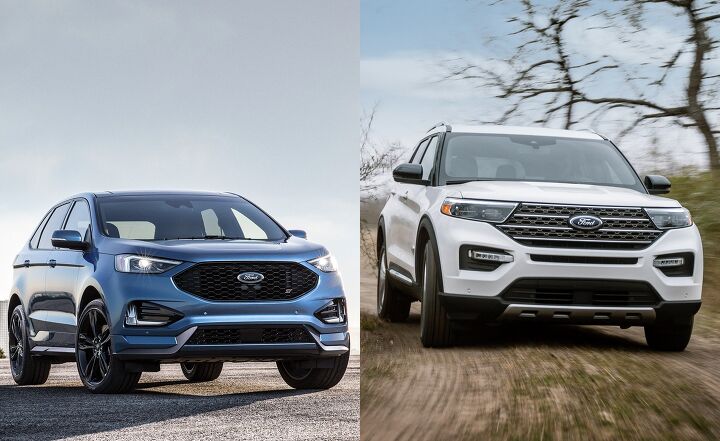























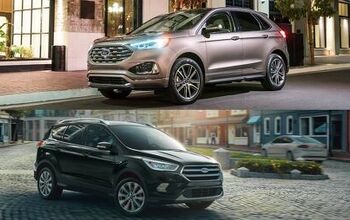

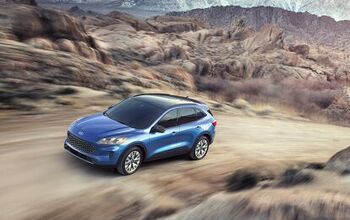
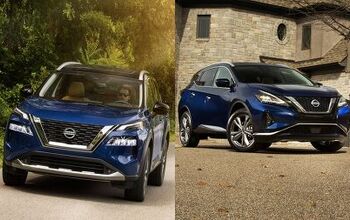



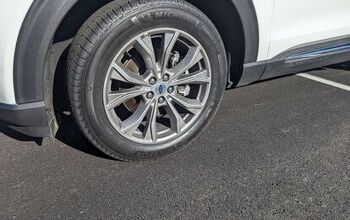







Comments
Join the conversation